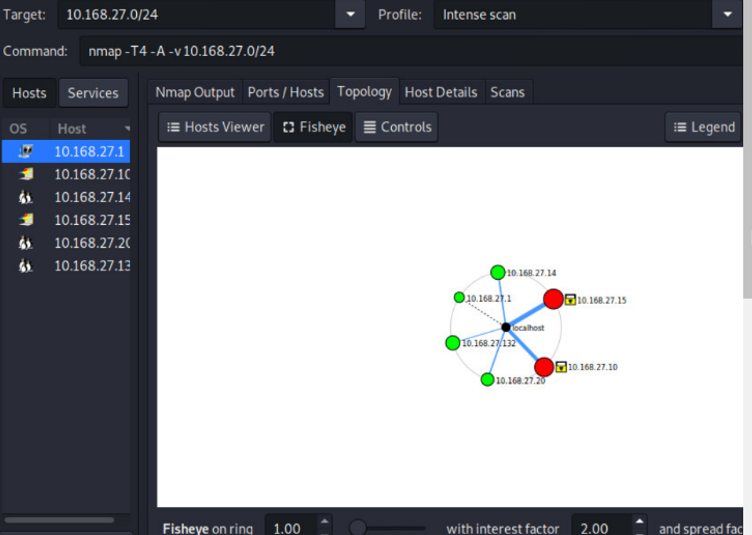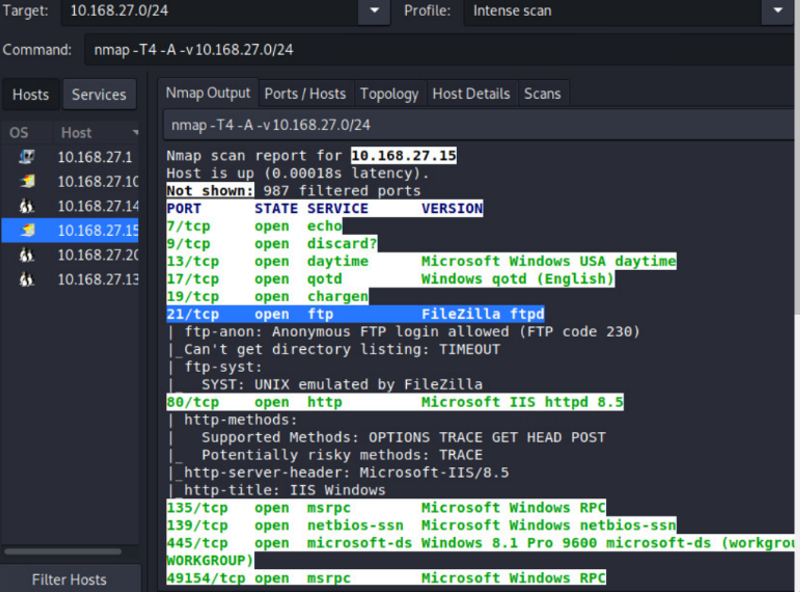Cybersecurity / IT
.jpg)
Network Vulnerability and Anomaly Analysis Using Nmap and Wireshark
For this school project, I conducted a network reconnaissance and analysis simulation using Nmap and Wireshark. The objective was to assess network topology, identify vulnerabilities and anomalies, and provide remediation strategies based on real-world best practices. This lab-based scenario provided me with practical experience in identifying and evaluating threats, learning how outdated systems, misconfigurations, and insecure protocols can leave a network vulnerable to compromise.
Introduction
The core of the project consisted of the following components:
-
Discover and map the network using Nmap.
-
Identify host vulnerabilities including exposed services and outdated software.
-
Analyze network packet captures (PCAPs) with Wireshark to uncover anomalous or malicious traffic.
-
Assess implications of identified risks.
-
Provide mitigation strategies using industry-recommended solutions and research.
Project Objectives


🔹 1. Network Scanning with Nmap
Tool Used: Nmap (via Zenmap GUI)
Target Network: 10.168.27.0/24
Scan Type: Intense Scan Profile
Findings:
-
The network featured six active hosts connected in a star topology, all linked through a centralized switch or router.
-
This structure allows centralized management but poses a single point of failure.
Key Host Observations:

Technical Steps and Tools Used
🔹 2. Vulnerability Summary from Nmap
🟠 Vulnerability #1 – FTP Service (Port 21, FileZilla)
-
Risk: Transmits data unencrypted.
-
Implication: Allows credential theft or data sniffing with tools like Wireshark.
-
Solution: Replace FTP with SFTP, which encrypts data in transit using SSH (Carrigan, 2023).
🔴 Vulnerability #2 – Outdated Windows Server 2008 R2
-
Risk: Unsupported OS prone to critical CVEs.
-
Implication: Open to privilege escalation and RCE attacks.
-
Solution: Upgrade to Windows Server 2019 or later, which is still supported and actively patched (Maurer, 2023).
🟡 Vulnerability #3 – Dual SSH Ports and Outdated OpenSSH (v5.5p1)
-
Risk: CVE-2023-38408 enables remote code execution.
-
Implication: Could be exploited to gain shell access or disrupt services.
-
Solution: Patch to latest OpenSSH version and disable unused SSH port (9090).


Technical Steps and Tools Used
Technical Steps and Tools Used
🔹 3. Packet Capture (PCAP) Analysis with Wireshark
Tool Used: Wireshark
File Analyzed: Pcap1.pcap
🔍 Anomaly #1 – Aggressive TCP Port Scanning (10.16.80.243)
-
Details: High volume of TCP SYN requests to multiple IPs on 10.168.27.0/24.
-
Detection: Non-sequential port scan activity, indicative of stealth scan.
-
Implication: Reconnaissance phase of an attack. If unaddressed, leads to targeted exploits.
🔍 Anomaly #2 – Unsecured FTP Communication (10.168.27.10)
-
Details: FTP login and file transfers observed in plaintext.
-
Implication: Exposes usernames, passwords, and file contents to interception.
🔍 Anomaly #3 – Excessive ARP Requests (10.16.80.243)
-
Details: Large volume of ARP traffic in a short time span.
-
Implication: Could indicate ARP spoofing or reconnaissance for man-in-the-middle attacks.

Implications of Not Addressing These Risks
Nmap Vulnerabilities:
-
FTP → SFTP
-
Justification: SFTP encrypts all communication, preventing unauthorized interception (Carrigan, 2023).
-
-
Windows Server Upgrade
-
Upgrade to Server 2019+ to receive patches and modern security features (Maurer, 2023).
-
-
OpenSSH Patch & Port Hardening
-
Upgrade to latest OpenSSH version; disable port 9090 unless justified.
-
Wireshark Anomalies:
-
Port Scanning Mitigation
-
Use firewalls, TCP wrappers, and intrusion detection systems to log and block suspicious scanning behavior (Fortinet, 2023).
-
-
FTP Block and Replace
-
Block FTP at firewall level. Enforce SFTP or SCP for secure file transfers (Horan, 2023).
-
-
ARP Spoofing Defense
-
Implement static ARP tables where possible; use ARP inspection on managed switches (Crowdstrike, 2023).
-
Mitigation & Recommendations

Technologies and Tools Used
-
Developed real-world skills in network mapping, vulnerability identification, and packet analysis.
-
Gained experience interpreting Event IDs, protocol-level anomalies, and CVE research.
-
Strengthened understanding of reconnaissance techniques and how attackers fingerprint networks.
-
Practiced correlating packet behavior with host-level findings for complete situational awareness.
Lessons Learned
This project sharpened my defensive and analytical skills in both host-based and network-level security. By combining Nmap for external scanning and Wireshark for deep network visibility, I was able to identify real-world risks and align them with industry-standard remediation tactics.
This hands-on experience has strengthened my ability to assess networks critically and respond with validated security solutions—an essential skill set for any cybersecurity role.
Conclusion
-
Carrigan, D. (2023). What is SFTP and Why It’s Secure. Retrieved from [Microsoft Docs].
-
Maurer, W. (2023). End of Support for Windows Server 2008 R2. Microsoft. Retrieved from [support.microsoft.com].
-
CrowdStrike. (2023). What is ARP Spoofing?. Retrieved from [crowdstrike.com].
-
Horan, M. (2023). Why SFTP is Safer Than FTP. Retrieved from [SANS Institute].
-
Fortinet. (2023). How to Prevent Port Scan Attacks. Retrieved from [fortinet.com].